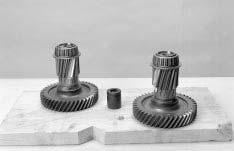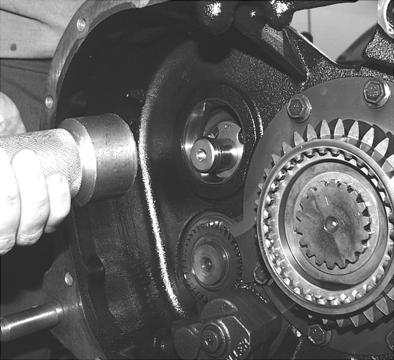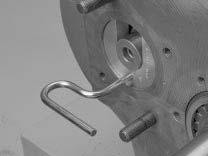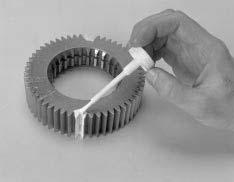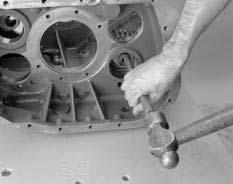
3 minute read
General Troubleshooting Chart
The chart on the following pages contains some of the most common problems that may occur with this transmission along with the most common causes and solutions.
Complaint Cause Corrective Action Noise - Growl / Rumble Torsional Vibration. Check driveline angles for proper u-joint working angles. [Noise may be most pronounced when Check driveline for out of balance or transmission is in a “float” (low torque) damage. condition. May also be confined to a par- Check u-joints for proper phasing. ticular vehicle speed.] Check clutch assembly for broken damper springs. Check for inadequate clutch disc damping.
Noise - Growl / Rumble at Idle (Idle Gear Rattle) Transmission bearing or gear failure. [Noise may be most pronounced under hard pull or coast (high torque).] Check transmission oil for excessive metal particles.
Excess engine torsional vibration at idle. Check for low engine RPM. Check for uneven engine cylinder performance. Check for proper clutch damper operation.
Noise - High Pitched Whine Gear Noise. Isolate as to axle or transmission noise. If transmission, isolate to specific gear or gears. Check for worn or defective shift lever isolator. Check for direct cab or bracket contact with transmission (“grounding”). Check for proper driveline u-joint working angles. Check for damaged or worn gearing.
General Troubleshooting Chart (cont)
Complaint Cause What to do next Hard Lever Shifting Master clutch dragging. Check master clutch for proper disen(Shift lever is hard to gear into or out of gagement. gear) Check master clutch for proper adjustment (both release bearing travel and clutch brake height). Shift linkage problem. (Remote shifter) Check shift linkage or cables for proper adjustment, binding, lubrication, or wear. Shift bar housing problem. Check shift bar housing components for binding, wear, or damage. Transmission mainshaft problem. Check mainshaft for twist. Check sliding clutches for binding, damage, or excessive wear. Driver technique. Driver not familiar or skilled with proper double-clutching technique. Driver contacting the clutch brake during shifts.
Shift Lever Jumpout (Shift lever comes out of gear on rough roads) Loose or worn engine mounts. Check engine mounts for damage, wear, or excessive looseness.
Shift lever problem. Check shift lever floor boot for binding or stretching. Check shift lever isolator for excessive looseness or wear. Check for excessive offset or overhang on the shift lever. Check for extra equipment or extra weight added to shift lever or knob.
Worn or broke detent spring or mechanism. Check for broken detent spring. Check for excessive wear on the detent key of detent plunger. Replace detent spring with heavier spring or add additional spring.
General Troubleshooting Chart (cont)
Complaint Cause Corrective Action Shift Lever Slipout Internal transmission problem. Check for excessively worn or damaged (Transmission comes out of gear under sliding clutches or shift yokes. torque) Transmission goes to neutral (Shift lever doesn’t move) Low air pressure. Check air regulator pressure.
Internal transmission problem. Check for excessively worn or damaged range sliding clutch or yoke. No range shift or slow range shift Transmission air system problem. Preform air system troubleshooting pro(Also see Air System Troubleshooting) cedure. Check for proper air signal from master valve. Check air module test ports for proper air delivery. Range cylinder problem. Check for failed or damaged range piston, piston bar, or cylinder. Check for failed or loose range piston snap ring. Range yoke assembly problem. Check for failed or damaged range yoke. Check for failed or loose range yoke snap rings. Check for excessively long fastener installed in rear support hole. Check for binding between range yoke bar and range alignment lock cover. Range synchronizer problem. Check for failed or damaged range synchronizer, sliding clutch, or mating gear. Check for excessively worn range synchronizer friction material. Grinding Noise on Range Shift Driver not preselecting range shift. Instruct driver to preselect range shifts. Range synchronizer worn or defective. Check range synchronizer and mating parts for excessive wear or damage.


